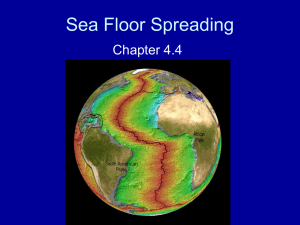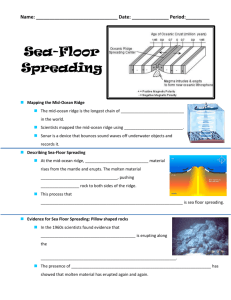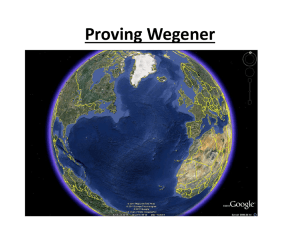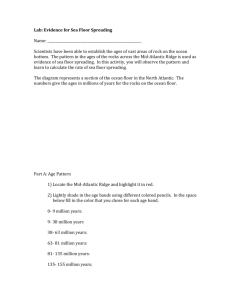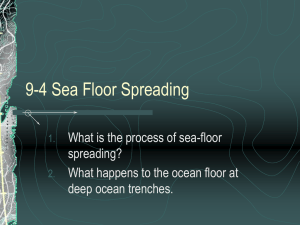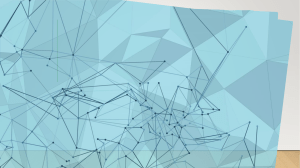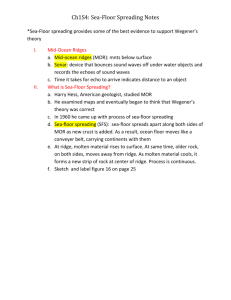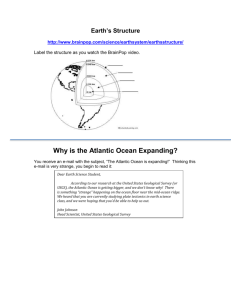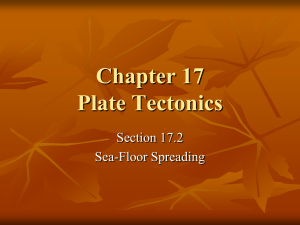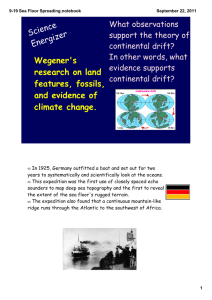Quiz study questions: WITH ANSWERS How is the mid
advertisement
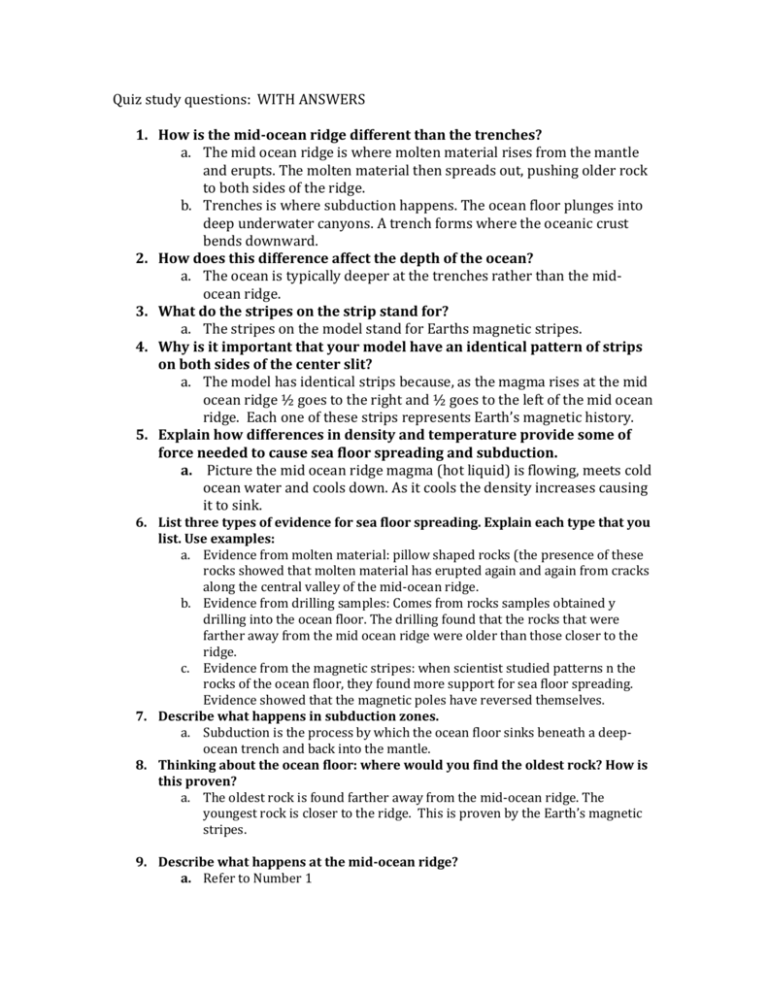
Quiz study questions: WITH ANSWERS 1. How is the mid-ocean ridge different than the trenches? a. The mid ocean ridge is where molten material rises from the mantle and erupts. The molten material then spreads out, pushing older rock to both sides of the ridge. b. Trenches is where subduction happens. The ocean floor plunges into deep underwater canyons. A trench forms where the oceanic crust bends downward. 2. How does this difference affect the depth of the ocean? a. The ocean is typically deeper at the trenches rather than the midocean ridge. 3. What do the stripes on the strip stand for? a. The stripes on the model stand for Earths magnetic stripes. 4. Why is it important that your model have an identical pattern of strips on both sides of the center slit? a. The model has identical strips because, as the magma rises at the mid ocean ridge ½ goes to the right and ½ goes to the left of the mid ocean ridge. Each one of these strips represents Earth’s magnetic history. 5. Explain how differences in density and temperature provide some of force needed to cause sea floor spreading and subduction. a. Picture the mid ocean ridge magma (hot liquid) is flowing, meets cold ocean water and cools down. As it cools the density increases causing it to sink. 6. List three types of evidence for sea floor spreading. Explain each type that you list. Use examples: a. Evidence from molten material: pillow shaped rocks (the presence of these rocks showed that molten material has erupted again and again from cracks along the central valley of the mid-ocean ridge. b. Evidence from drilling samples: Comes from rocks samples obtained y drilling into the ocean floor. The drilling found that the rocks that were farther away from the mid ocean ridge were older than those closer to the ridge. c. Evidence from the magnetic stripes: when scientist studied patterns n the rocks of the ocean floor, they found more support for sea floor spreading. Evidence showed that the magnetic poles have reversed themselves. 7. Describe what happens in subduction zones. a. Subduction is the process by which the ocean floor sinks beneath a deepocean trench and back into the mantle. 8. Thinking about the ocean floor: where would you find the oldest rock? How is this proven? a. The oldest rock is found farther away from the mid-ocean ridge. The youngest rock is closer to the ridge. This is proven by the Earth’s magnetic stripes. 9. Describe what happens at the mid-ocean ridge? a. Refer to Number 1 10. If the sea floor is spreading; why is Earth not getting any bigger? In your answer included: a. Sea floor spreading b. Subduction zones c. Magnetic stripes d. Evidence for sea floor spreading e. Evidence from the drilling f. Density of the crust and how temperature is related. REFER TO QUESTIONS ABOVE FOR THE ANSWER TO #10. This will be an essay type question.
